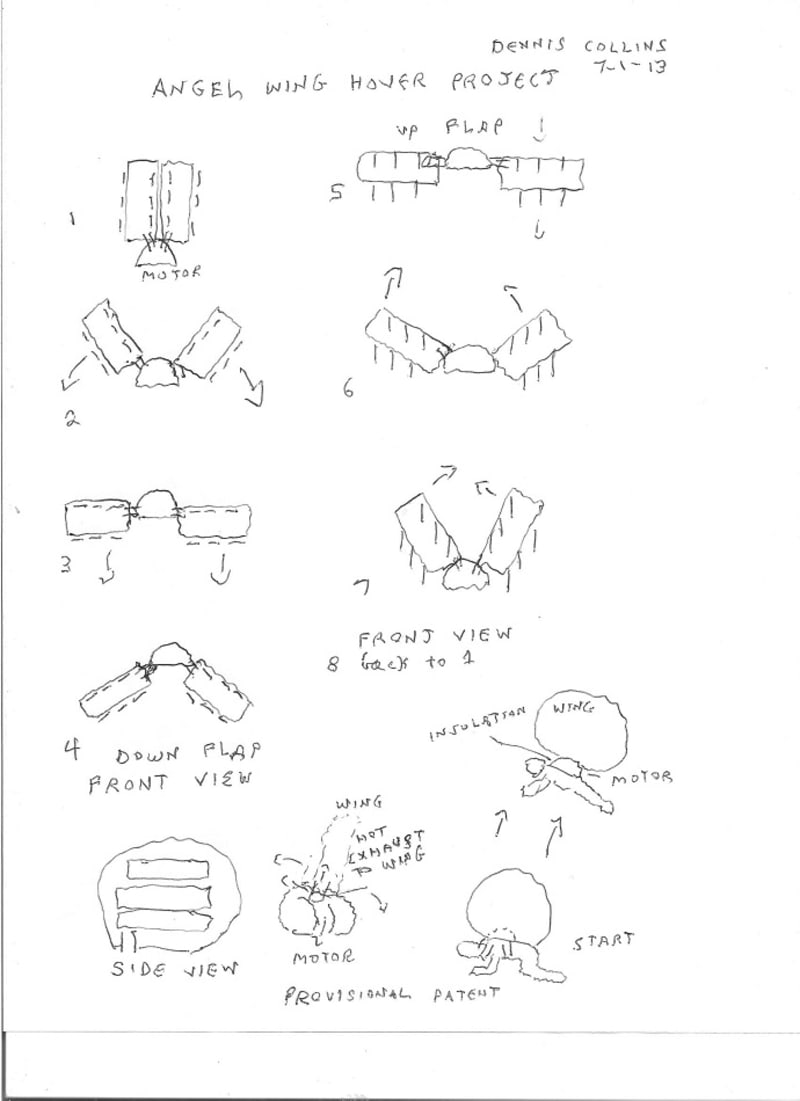Personal flight has stayed an ojective since the Icarus story and Leonardo da Vinci. The problem is getting sufficient lift. The attempt to solve this problem here is through a hot air balloon effect of putting hot exhaust from a (possibly motorbike) motor into wing compartments through (empty) tubes which also serve as struts for a motorized flapping motion in line with bird/insect flight as described by Vol. IV of Sir James Lighthill's collected works (1997), including the Weis-Fogh Mechanism or other mechanism of lift. The wing compartment for each of the two wings, which may be around eight inches thick, contains three or more flaps on the top and bottom surface,which are closed on the downward part of the flapping motion to contain the hot exhaust gas and open on the upward part of the motion to allow the wing (compartments) to move upward easily and fill with more hot exhaust gas through the tubes. Please see drawings cycle from 1 to 7. The cycle from 1 to 2 also creates vacuum lift as the wings separate. The apparatus including motor with wings would be strapped to the back of the flier with sufficient insulation to prevent heat from the motor burning the back of the flier. Needless to say the wing compartments would have to be highly heat-resistant. As far as known the attempt to combine hot-air balloon lift in the wings with bird/insect flapping lift is novel, as well as making positive value from motor exhaust heat. Further electronic controls, possibly with disconnectable brain shunts to the cerebellum of the flier, would be necessary to stabilize the motion. Mechanical or electronic controls could synchronize the flapping wing motion with the compartment flaps. There would also have to be valves to control the flow of hot air through the tubes for starting, which might be termed "going up the chimney." Development would have to be in stages, with perhaps a separate parachute for descent at first. Even basic versions could help with insertions into or extractions from flood or fire or military danger zones, or later, tethered hovering window washers. Certainly the project would be an interesting problem for multiphysics, and appears to be within the range of current manufacturability. Disabled people might volunteer to test the apparatus.
Like this entry?
-
About the Entrant
- Name:Dennis Collins
- Type of entry:individual
- Software used for this entry:COMSOL, CAD, Mathematica, MATLAB
- Patent status:none

